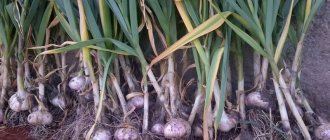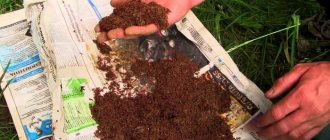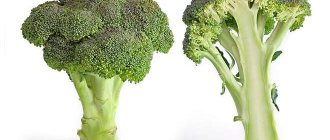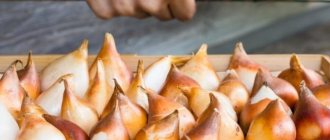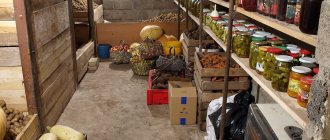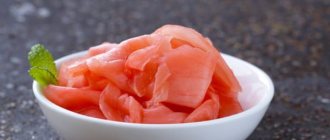Bell pepper is a juicy vegetable that has an unusual taste and contains a set of useful microelements and vitamins. It is used to prepare vegetable salads, added to soups and other dishes. The product has low storage requirements and, when certain conditions are created, can be stored at room temperature for a year without losing its beneficial qualities. Vegetables can be kept in the refrigerator and frozen, but how to properly prepare them for this? What conditions must be met for long-term storage? Answers to the above questions are further in the article.
- 5.1. Related articles:
Prepare for storage correctly
Bad vegetables should be sorted before storing. You may come across slightly rotten specimens, which will subsequently lead to rotting of the entire product.
In addition to the rotting factor, it is necessary to consider which varieties are suitable for long-term storage. These include the later ones. They will not be overripe by the time of harvesting, and therefore will not rot.
The next condition for preparation will be determining the maturity of the product.
There are two stages of ripeness:
- Technical . The fruit has reached the desired size, but is not completely ripe.
- Biological . These are vegetables that have reached their maturity. They should be washed in running water, “bathed” in a 1% solution of copper sulfate and dried in air.
Before going to the market, you need to decide how the pepper will be stored:
- For freezing, drying, and pickling, vegetables are selected at the biological stage of growth.
- To preserve fresh peppers, the technical maturity stage is recommended.
Advice! When purchasing peppers at the market, you must buy them without dents, wrinkles, and with an elastic tail. The vegetable must be clean, without traces of disease.
Best varieties for storage
Breeders have developed special varieties for storage in the cold season.
These include:
- “Swallow” is a fleshy, oval-shaped fruit. The harvest is well stored for a long time.
- "Aristotle X3 p F1" - distinguished by fleshy cylindrical fruits. Suitable for preparing salads in winter.
- “Novogoshary” are round-shaped fruits, juicy and sweet.
- "Beglicium" - fruits of green or dark red color.
Be sure to read:
Storing onions, sets and leeks in an apartment or your own home in winter
Preparation
When collecting at your summer cottage, you need to carefully cut the vegetable with its tail using pruners or a knife.
It is recommended to freeze medium-sized peppers with minor damage. To store them fresh, you need to choose the right room, temperature, humidity in the storage and lighting.
Features of storing hot peppers
Most often, hot peppers are stored in winter in their released form, but you can keep them fresh. To do this, bundles of the burning product are placed in a dry place. In a well-ventilated area at a temperature of about 0 degrees, the maximum duration of freshness preservation will be 1 month.
If longer storage is required. The best solution is freezing. During storage, the product will not lose its value and will not change color or structure.
List of basic rules:
- the peppers are washed under running water and dried with a towel;
- if you need to reduce the pungency of the product, before freezing it must be placed in boiling water or blanched for 2 minutes;
- chili is frozen whole or cut;
- you need to cut carefully, working with gloves;
- The product is packaged in plastic bags and placed in the freezer.
Hot peppers can be stored frozen for about 1 year.
Often, hot peppers are canned to prepare food for the winter. In this form, it is stored in cool conditions, because the product contains a minimal amount of vinegar, so it can spoil. It is better to use small mayonnaise jars for such preparations. For storage, it is convenient to place them on the side shelves.
Marinating is carried out according to the following recipe:
- Hot peppers are cleared of seeds and washed under running water.
- Start blanching the product. To do this, transfer the vegetable to a colander and lower it into boiling water for 2-3 minutes.
- Horseradish, currant and cherry leaves, and a clove of garlic are added to pre-sterilized jars.
- Add spices. Place ½ tsp of salt on a 300 ml jar and add half the amount of sugar.
- Place blanched peppers in a vessel. Fill the container with vegetable oil or boiling water and seal with a lid.
- You should not add herbs and spices to the preparation; pepper already has a very strong taste.
- After complete cooling, the workpiece is put into the refrigerator. Storage duration is 6-12 months.
Attention! Storing fresh hot peppers in the refrigerator is not recommended. It quickly loses its beneficial properties and fades.
Room, humidity, temperature and lighting
It is not recommended to store bell peppers in warm rooms with a lot of light. It is necessary to choose cool storage - preferably a cellar or basement.
If you need to freeze fruits, it is recommended to choose a freezer with a constant temperature of -10 degrees Celsius. Under these conditions, pepper will retain its qualities for a long time.
Unripe vegetables can be kept in boxes from +8 to +10 degrees. Under these conditions, the fruits will be able to remain fresh and not rot for three months. Humidity should not be higher than 90%.
Ripe vegetables are also stored in boxes and refrigerators at +2. The storage duration under these conditions will be two months at a humidity level of up to 80%.
On the balcony and loggia
The best place for keeping vegetables in urban environments is a balcony or loggia.
If the following rules are observed, the harvest can last three months:
- It is recommended to add sweet vegetables of medium maturity.
- Cover wooden containers with paper and place in a dark place.
- Wrap the pepper in paper.
- Place in containers.
At a storage temperature of +2 degrees, the family will be able to eat fresh vegetables until January.
At room temperature
At room temperature, the lifespan of pepper is reduced significantly. Therefore, a box filled with fruits from a dacha or store should be placed next to the balcony door. That is, where it is coolest.
Important! At temperatures above +10 degrees, the shelf life of sweet peppers will decrease. At temperatures below zero, peppers that are not seeded and cut into pieces will spoil.
It is imperative to cover the boxes with some light material to avoid the appearance of small flies that parasitize vegetables.
Unripe peppers at room temperature will retain their properties for a month, but ripe ones will not last for 12 days.
In the refrigerator or freezer
The product will keep in the vegetable compartment of the refrigerator for three months or more. You just need to prepare the fruits correctly: you should not put them in the freezer unpeeled. An unripe vegetable will become unusable.
Be sure to read:
How and where to properly store potatoes: 5 ways
How to properly store peppers in the refrigerator:
- Wash the vegetables.
- Let dry.
- Wrap the fruits in plastic wrap or place them in bags, making small holes for air access.
- The place where the peppers will lie can be greased with vegetable oil. It helps maintain the elasticity of the fruit.
To store in the freezer, cut the pepper into pieces, pack in a plastic bag and place in a freezer container.
Important! A frozen product is more suitable for frying than for salad.
"Acute" storage
Many housewives do not know how to store hot chili peppers. Its main difference from sweet pepper is that the vegetable is harvested when it is already ripe.
Then the chili will gain spiciness and become a preservative.
To store hot chili peppers, you will need to take a few simple steps:
- Wash and dry the pods.
- Pierce the dry pods with a needle and pull a thread through them.
- Hang on the wall like a garland.
Such peppers can be removed at any time, chopped and used to add a spicy taste to the dish.
In the basement or cellar
Before storing vegetables, the cellar or basement must be thoroughly ventilated, and storage containers must be washed with copper sulfate.
Wrap the vegetables in paper, place them in disinfected boxes and lower them into the cellar. Maintain the temperature up to +10 degrees.
Another method of keeping it in the basement is to hang the entire plant from the ceiling. To do this, it is pulled out by the roots. Before hanging, it must be sprayed with vitriol: this way the pepper will last for up to six months.
We freeze preparations for salads and main courses
Another way to store bell peppers is freezing. This method is convenient because you can freeze not only chopped vegetables, but also whole fruits.
To freeze whole bell peppers, wash and dry them thoroughly. After this, remove the stalk and core, stack the fruits one inside the other, about 5-7 pieces each. Place such preparations in bags or containers and place them in the freezer at the “freezing” temperature setting. Store frozen food in the freezer storage compartment. Vegetables frozen in this form are suitable for preparing vegetable or meat stuffed peppers.
To freeze sliced peppers, you need to cut the prepared product into pieces that are convenient for you. This can be straws, from which salads and stews are subsequently prepared, or cubes, which are suitable for preparing roasts and first courses.
This product is stored for 10-12 months.
Where else can you store peppers in winter?
It is recommended to keep the pepper fresh so that it does not lose its beneficial substances and taste in glass jars.
To prepare for storing peppers in jars, do the following:
- Wash and remove seeds from fruits.
- Cut into two halves.
- Place in a dry jar and close with a lid.
For salads, it is recommended to cut the pepper into pieces and wrap it in a plastic bag, after releasing the air, put it in the freezer at a temperature of -15 degrees.
Be sure to read:
How to properly store green tomatoes so that they turn red and last until the New Year
How to store cucumbers in the refrigerator
I will tell you about several simple but effective ways.
This way, cucumbers can be stored for several days. In the vegetable compartment: They are stored in the refrigerator (in the vegetable tray) for about 3 days, and there is no need to prepare them for such short-term storage. In cellophane: Place the cucumbers in a plastic bag and cover them with damp gauze. The top of the package is left open. Fruits packaged in this way can stay fresh for about 10 days. In paper: By wrapping each cucumber in a paper towel (napkin) and placing them in a plastic bag, you can keep the greens fresh for up to a week. You can keep the cucumbers fresh for up to a week in water. To do this, pour cold water into a bowl (or tray), partially (1-2 cm) immerse the fruits in it, tails down, and place the container in the vegetable compartment of the refrigerator. The water needs to be changed once a day. The secret of the method is this: as the fruits lose moisture, they will be able to compensate for its loss by absorbing water. To store using this method, it is better to take cucumbers with thick, dark green, tuberous skin. Wash the cucumbers carefully and let them dry. Then coat them with egg white. A film forms on the peel, which will prevent moisture evaporation. Store cucumbers in a protein film in the refrigerator, on the vegetable shelf. At low temperatures (below 0°C), cucumbers begin to quickly soften and mucus appears on them. Therefore, when storing cucumbers in the refrigerator, make sure that they do not end up near the freezer.
Drying, preservation, semi-finished products, seasonings
Other ways to preserve bell peppers include:
- drying,
- conservation,
- preparation of semi-finished products,
- making seasoning.
Drying
You can dry sweet peppers as follows:
- Remove seeds.
- Cut into pieces.
- Place on a baking sheet and dry in the oven for 3 hours at +50 degrees.
Conservation
For canning you will need the following components:
- sweet pepper – 1 kg,
- water – 1 l,
- table vinegar – 0.7 l,
- honey – 1 kg,
- vegetable oil – 5 tbsp. l.,
- salt – 40 g.
Cooking steps:
- Wash and place the pepper in boiling water. Remove the skin.
- Remove seeds and cut into long strips.
- Place in a jar.
- Place vinegar and honey in hot water. Pour into a jar.
- Add oil.
- Screw on the lid.
Seasonings
Ingredients you will need to make the seasoning:
- fresh bell pepper, peeled – 6 kg,
- fine salt – 1 kg,
- hot pepper – 2 pcs.
Preparation steps:
- Wash the vegetable, remove seeds and tails.
- Grind in a meat grinder.
- Add salt, hot pepper and stir.
- Pour into dry jars.
- Place in a cold room.
Semi-finished products
To make a semi-finished product, you need:
- pepper,
- plastic bags.
Preparation steps:
- Wash and remove tails and seeds.
- Dry thoroughly.
- Cut into lengthwise pieces.
- Place into plastic bags.
- Place in the freezer.
Vegetable mix
To prepare vegetable dishes, chopped vegetables are used, which go well together. The vegetable mix is distributed in small portions into bags and frozen. Bell pepper goes well with the following foods:
- broccoli;
- carrot;
- beans;
- green pea;
- onion;
- corn.
Before freezing, vegetables are washed and dried well. Then they are cut into fractions of the required size, placed in bags and sent to the freezer.

